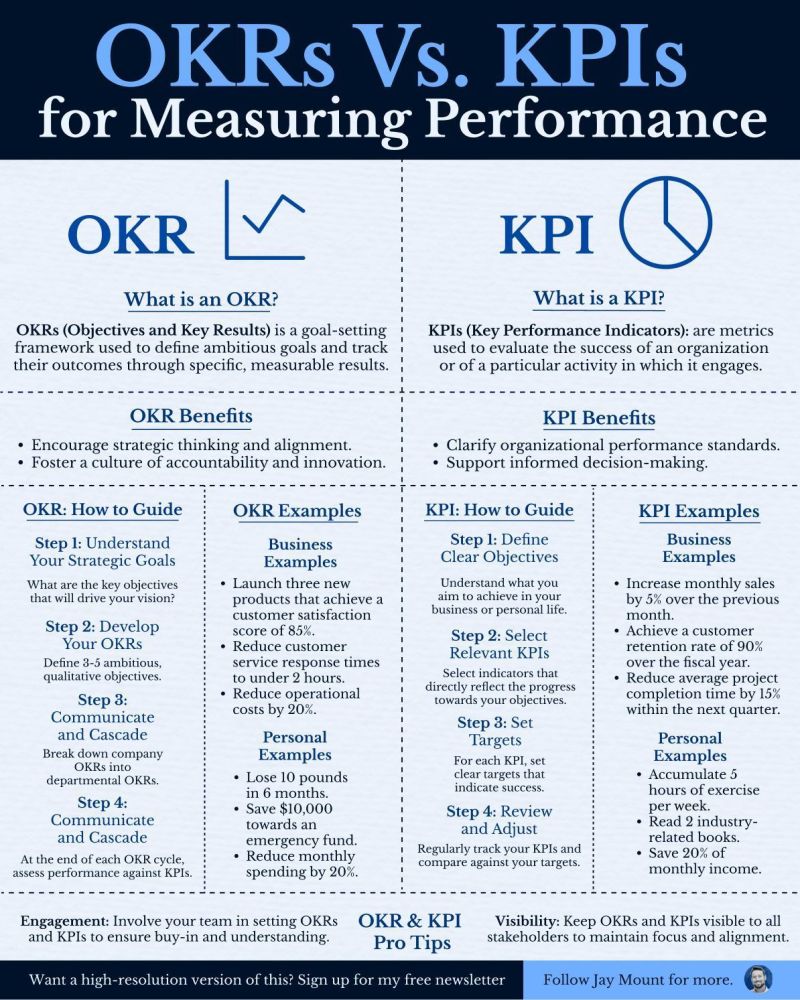OKR và KPI
Quote from bsdinsight on 12 April 2025, 11:12Are you making progress, or just moving through tasks?
Activity looks productive but
Outcomes tell the truth.It’s easy to fill your calendar and inbox.
But real growth comes from aligning effort with impact.High-performing teams don’t just stay busy.
They use systems like OKRs and KPIs to stay focused, accountable, and results-driven.OKRs = Direction
(Objectives & Key Results)➟ Set clear, outcome-based objectives
➟ Define measurable key results
➟ Align efforts across teams
➟ Focus on what moves the business, not just what gets doneKPIs = Validation
(Key Performance Indicators)➟ Track the few metrics that truly matter
➟ Use real-time insights to steer decisions
➟ Replace gut feelings with data
➟ Bring clarity to what success actually looks likeHow to apply OKRs effectively:
1. Anchor objectives in outcomes, not tasks
2. Set 2–4 measurable key results
3. Align across functions to eliminate silos
4. Review often—refine based on what’s realHow to make KPIs useful, not reactive:
1. Choose metrics tied to your goals
2. Set clear targets with timelines
3. Monitor in real time, not just quarterly
4. Use insights to adjust, not just reportOKRs define where you’re going.
KPIs confirm you’re getting there.
Are you making progress, or just moving through tasks?
Activity looks productive but
Outcomes tell the truth.
It’s easy to fill your calendar and inbox.
But real growth comes from aligning effort with impact.
High-performing teams don’t just stay busy.
They use systems like OKRs and KPIs to stay focused, accountable, and results-driven.
OKRs = Direction
(Objectives & Key Results)
➟ Set clear, outcome-based objectives
➟ Define measurable key results
➟ Align efforts across teams
➟ Focus on what moves the business, not just what gets done
KPIs = Validation
(Key Performance Indicators)
➟ Track the few metrics that truly matter
➟ Use real-time insights to steer decisions
➟ Replace gut feelings with data
➟ Bring clarity to what success actually looks like
How to apply OKRs effectively:
1. Anchor objectives in outcomes, not tasks
2. Set 2–4 measurable key results
3. Align across functions to eliminate silos
4. Review often—refine based on what’s real
How to make KPIs useful, not reactive:
1. Choose metrics tied to your goals
2. Set clear targets with timelines
3. Monitor in real time, not just quarterly
4. Use insights to adjust, not just report
OKRs define where you’re going.
KPIs confirm you’re getting there.


